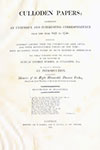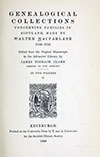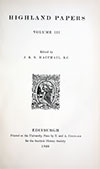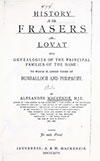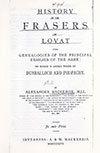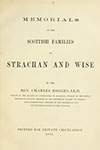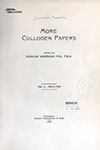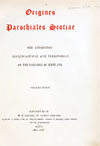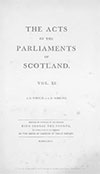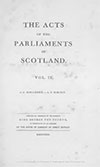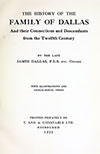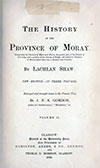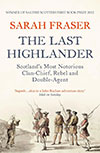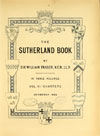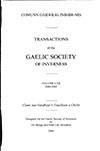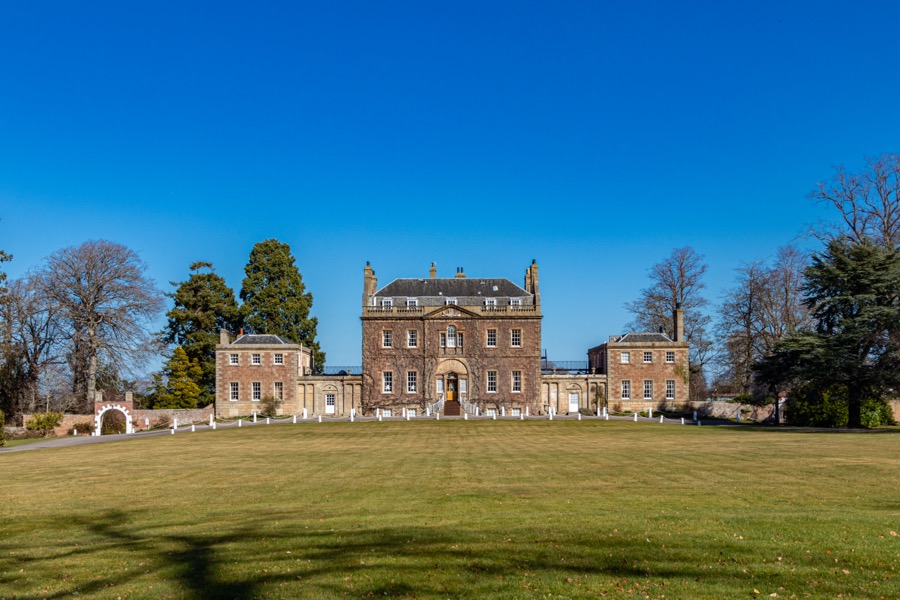

Culloden House is a late 18th century mansion however it incorporates the vaulted basement of the 16th century Culloden Castle.
The lands of Culloden seem to have been Crown lands from an early date. In 1238 Alexander II granted various lands, including the lands of Cullodyn, to Andrew de Moravia, Bishop of Moray, and his successors as Bishop.
However by the early 14th century the lands of Culloden seem to have been in secular hands as Muriel Mackintosh, daughter of Angus Mackintosh, 6th chief of Clan Mackintosh, and Eva of Clan Chattan, married an unnamed laird of Cullodin. He may possibly have been an Edmonstone of that Ilk as in the second half of the 14th century David II granted the barony of Culloden to Sir John Edmonstone of Edmonstone.
There may have been another Mackintosh and Edmonstone marriage as later in the 14th century an unnamed daughter of William Mackintosh, 7th chief of Clan Mackintosh, and Margaret Macleod, daughter of Roderic mor Macleod of Lewis, married the unnamed laird of Cullodin.
Towards the end of the 14th century the lands of Culloden are said to have passed to Alexander Stewart, the Wolf of Badenoch and fourth son of Robert II, as part of a dispute with Alexander Bur, Bishop of Moray, regarding authority over lands in Badenoch. If this was the case it would suggest the Bishops of Moray still held Culloden when the Edmonstones were in possession. This seems unlikely and may have stemmed from a misinterpretation as Culloden was not part of Badenoch.
Certainly the Edmonstones still held Culloden in the 15th century when it was possessed by Sir William Edmonstone of Cullodin and Duntreath who was married to Mary Stewart, the eldest daughter of Robert III. Following his death in 1460 he was succeeded in Culloden by his son, also Sir William. The younger Sir William died in 1486 when his son, Sir Archibald, succeeded to Culloden. Sir Archibald died in 1502 and Culloden passed to his son, another Sir William.
According to the Ordnance Survey Name Book the seat of the Culloden estate was originally at Balmore, close to the present Stratton Lodge, before moving to its present site in or before the 16th century. It’s possible that this change may have occurred in 1506 when Sir William sold the lands of the barony of Cullodin to Alexander Strathauchin, or Strachan, of Scottistoun, and that Strathauchin was responsible for building the first castle at Culloden.
The numerous vaulted chambers below the current house, and several gun loops, could certainly date from this period.
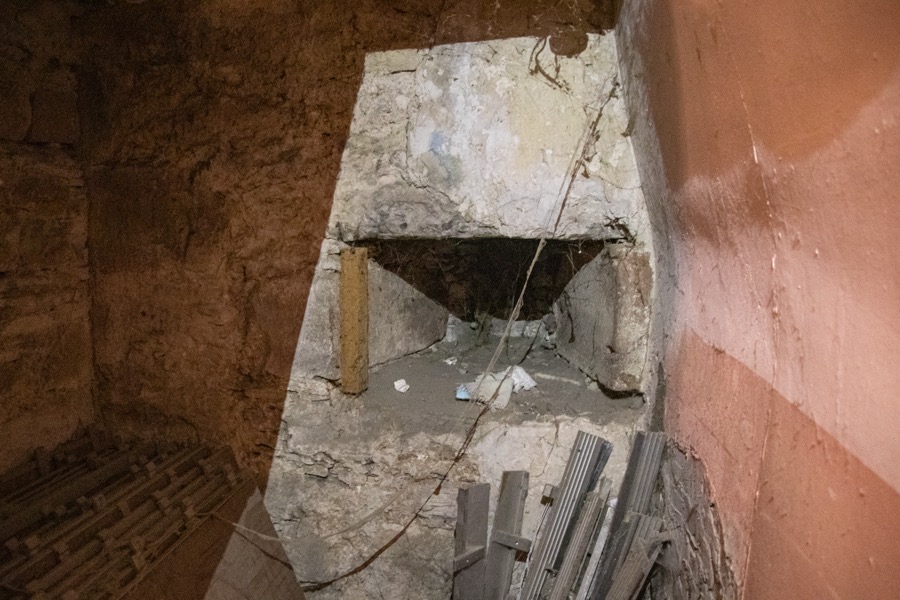

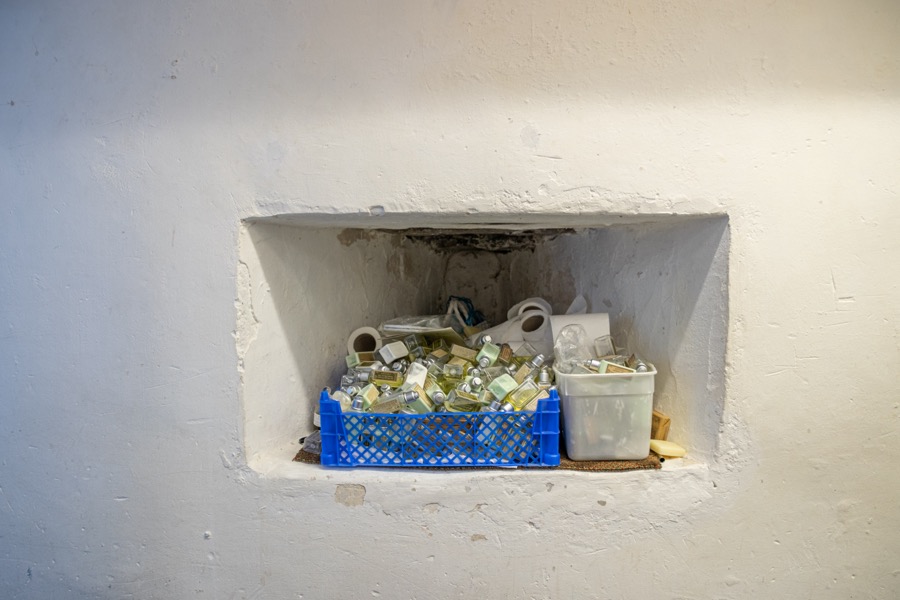
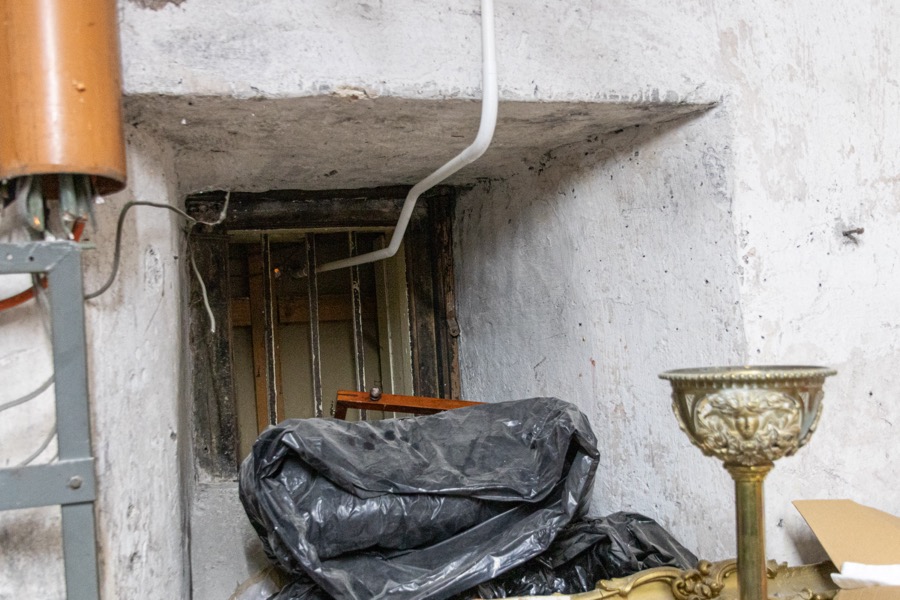


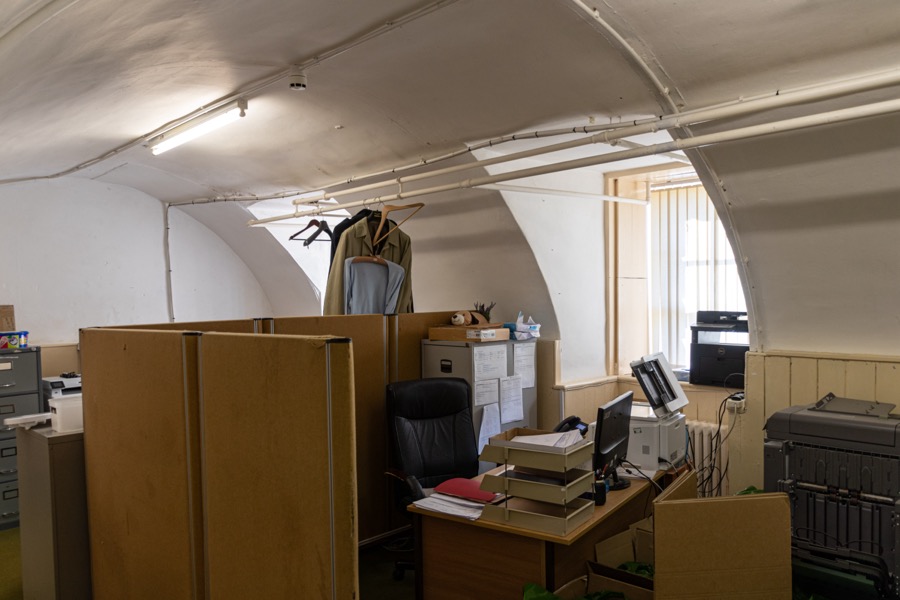
A large fireplace arch, which was presumably located within the castle’s kitchen, also remains.

Interestingly within the left side of the fireplace is an opening which leads into a tunnel which returns back along the outside edge of the room’s vault. This has been interpreted as a possible escape tunnel.
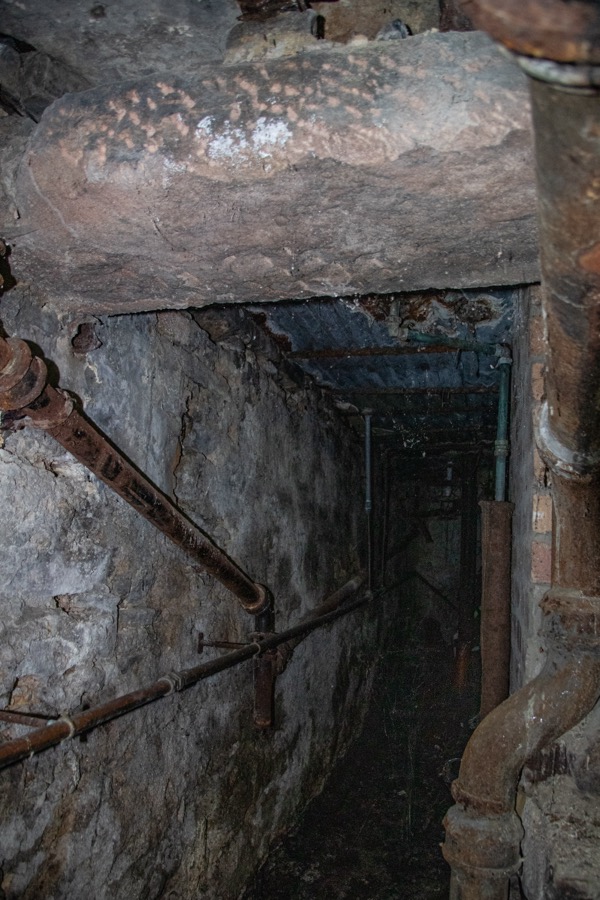

Also evident in the basement are the massively thick walls of the original castle.


Some sources state that the lands of Culloden were split into three portions for three heiresses around 1520, but this may be the conflation of two separate episodes of history. The lands certainly seem to have been divided by 1539 when George Strathauchin received a grant of the lands of Estir Cullodin which his father, Alexander, had resigned. The following year George received a grant of the lands of Myd Cullodin, Westir Cullodin and Culquhannak which he had resigned, reserved in liferent to Alexander. However at this time all three parts were held by George Strathauchin.
George married the unnamed eldest daughter of his neighbours, Hugh Rose of Kilravock and Agnes Urquhart, and they had three daughters. Marjory married Alexander Dallas of Budgate, Elizabeth married Thomas Gordon of Wrayis and Margaret married Hucheon Rose, presumably a Rose of Kilravock, who was described as residing at Kinray of Dalcross.
Beginning in 1570 Lachlan Mor Mackintosh of Mackintosh, 16th Chief of Mackintosh, bought Culloden from the heiresses and their husbands in what seems to have been quite a protracted process. In that year Gordon of Wrayis, Elizabeth’s husband, issued a discharge to Mackintosh for £395 6s. 8d. in part payment for the lands of Cullodin.
Mackintosh seems to have acted as the legal guardian of Margaret Strachan as she was described as his ward in a contract of December 1576. Margaret married without Mackintosh’s permission which gave him the legal right to seek double or triple the amount of her dowry. Her dowry being £500, Mackintosh settled on £1000 and since the couple couldn’t pay the debt they arranged a deal by which they would sell Margaret’s third of the lands of Culloden to Mackintosh once she was served heir-portioner to her father.
The purchase of Culloden was finally completed in December 1582 when Marjory and Dallas of Budgate discharged to Mackintosh their third of Wester, Mid and Easter Cullodyne, and Culquhonak, for the sum of 800 merks.
Mackintosh may have been responsible for remodelling the castle of the Strachans, which is marked on Timothy Pont’s late 16th century map of Moray and Nairn as Coulloddinn Castle, a large, 4 storey castle with two pitched roofs. A crossed out representation of the castle seemingly shows it with an arched entrance into a courtyard.
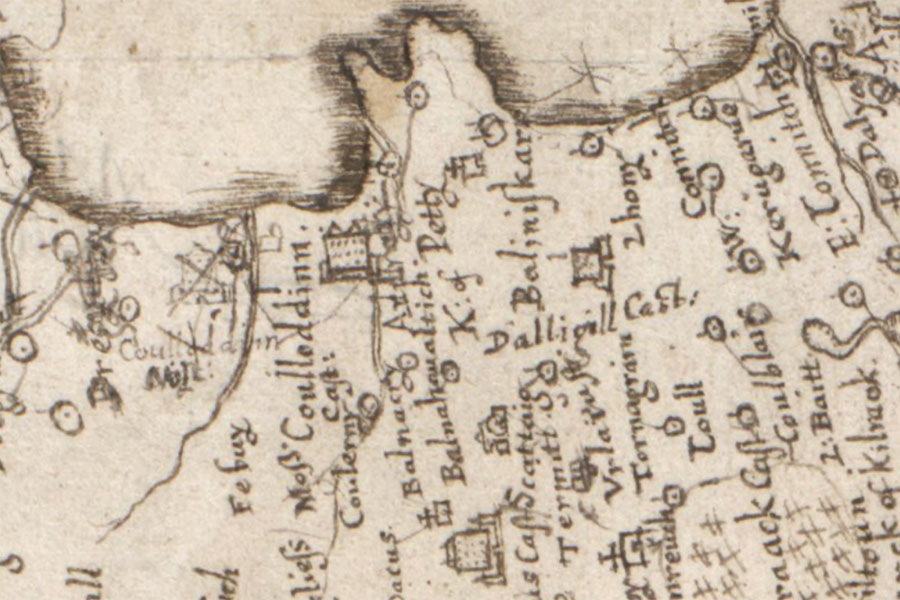
Timothy Pont, c.1583-1614map image courtesy of NLS
Mackintosh died in 1606 and was succeeded by his grandson, Lachlan Mackintosh of Dunachton. In May 1611 the elder Mackintosh’s widow, Agnes McKenzie, renounced her liferent right to the barony, tower and mill of Cullodin in favour of her grandson.
The younger Mackintosh signed a marriage contract in August of the same year with John Grant of Freuquhie by which he agreed to marry Grant’s daughter, Annas Grant. The contract confirmed that Mackintosh was the owner of “the lands and barony of Cullodin, with tower and fortalice thereof” and that he would infeft Annas in liferent in those lands and “heritably the heirs-male of their bodies”.
Mackintosh was later in dispute with George Gordon, 1st Marquess of Huntly, and Gordon’s son, George Gordon, Earl of Enzie, over the teinds or tithes of Culloden which were apparently owed to them. In January 1615 Lord Gordon and James Mowat, Writer to the Signet, wrote to James VI to complain that Mackintosh had recruited various “broikin heigh land men” as “rebells to be his suldeours and keeps them in his houss of Collodin”.
The dispute rumbled on for a number of years as in 1618 the Marquess of Huntly sent men “to distrain the corn on the Culloden estate” but they were driven off by Mackintosh, supported by Grant of Freuchie and Mackenzie of Kintail. The Earl of Enzie complained to the Privy Council and gathered a force, marching on Culloden to take the corn. Mackintosh however fortified “the house of Culloden with munition and shott, which wes committed to the custodie of his tuo uncles, Duncan and Laghlan; they draw all the cornes within shott of the castell.”
Sir Robert Gordon was brought in as peacemaker and bloodshed was avoided, however Mackintosh was declared a rebel by the Privy Council. The lands of Culloden seemingly ended up in the hands of the Earl of Enzie as part of a wadset arrangement with Mackintosh for 17,000 merks. In November 1619 the Earl of Enzie signed letters of reversion to Mackintosh, then styled “of Torchastell“, over the lands of Easter Cullodin, the easter half of Mid Cullodin, and half of the mill of Cullodin, with the remainder of the lands to be returned upon payment of the final 8000 merks.
In May 1621 Mackintosh, with the consent of his wife, Annas or Agnes Grant, and of his “goodame”, Agnes Mackenzie, wadset “the davoch lands of easter Cullodin and others in the barony of Cullodin” to Sir Rorie Mackenzie of Coigeach, nephew of Sir John Grant of Freuchie, for the sum of 10,000 merks. This deal seems to have been encouraged by Grant’s late father in order to save Mackintosh from his problems with the Earl of Enzie.
It is often stated that in 1625 or 1626 the estate and barony of Culloden were sold for to “Grey” Duncan Forbes, a local merchant who made his fortune in the fur trade and a descendent of the Forbes of Tolquhon family. However in 1628 Colin Mackenzie, third son of the late Sir Rorie Mackenzie, along with his cousin, Colin Mackenzie, Earl of Seaforth, Alexander McKenzie of Culcovie and Alexander McKenzie of Coul, made a claim of apprising against William Mackintosh, son and heir of the late Sir Lachlan. Mackenzie requested that Mackintosh pay him 10,000 merks or else the lands should be apprised to him. Mackintosh refused to pay and letters of apprising were issued in April 1629.
In July 1629 the lands and barony of Culloden were adjudged to be equivalent to a debt of £10,466, 13s. 4d. to Colin Mackenzie. The case seems to have dragged on for several years however it seems to have been resolved by May 1634 when William Mackintosh, now of Torcastle, was granted “the three third parts of the villa and lands of Wester Cullodin, Mid Cullodin, Eister Cullodin and Culquhinnak, with their malts, heaths and crofts” and “the three third parts of the mills of Cullodin and Culquhinnak, integral to the barony of Cullodin”, with Mackenzie renouncing his claim to them if favour of Mackintosh.
The drama wasn’t over however as in March 1635 the young Mackintosh made a claim against his tutor, Grant of Freuchie, who was alleged to have come to the Castle of Cullodin “breaking up of a vault door therein” and taken away the “haill auld evidents contennit in a charter kist” to his house of Lethin where he broke open the said chest and another contained within it.
In March 1637 Mackintosh sold the lands of Wester, Mid and Easter Cullodin for 19,5000 merks to the aforementioned Duncan Forbes of Bught, merchant burgess of Inverness and a former Provost of Inverness, his wife, Janet Forbes, daughter of James Forbes of Corsindae, and their eldest son, John Forbes. Duncan would go on to become a Member of Parliament, served again as Provost of Inverness, and died in 1654.
He was succeeded by his eldest son, John Forbes, Provost of Inverness, who in 1643 had married Anne Dunbar, daughter of Alexander Dunbar of West Grange. The Forbes family were by this time influential and powerful members of the community, and of considerable wealth.
In 1666 Robert Gray of Arkboll found himself in debt to John to the tune of 8659 merks. Gray was apprised of the estate of Arkboll which was then granted to John by a charter issued the following year. John added to his land holdings in 1669 by buying the barony of Ferintosh and the estate of Bunchrew
John died in 1687 and was succeeded by his eldest son, Duncan, who had been educated at at Marischal College in Aberdeen and the University of Bourges in France. Duncan had married Marie Innes, daughter of the second Sir Robert Innes of Innes, in 1668 and they would go on to have nine children.
The lands of Culloden were occupied and plundered by Jacobites under Viscount Dundee in 1688, for which Duncan Forbes received as compensation an exemption in perpetuity from the payment of excise duty, apart from an annual fee of 400 merks, on whisky distilled on the Ferintosh estate. The loss in duty was estimated at some £54,000 Scots.
Following Duncan’s death in 1704 his eldest son, John, who was married to Jean Gordon, daughter of Sir Robert Gordon of Gordonstoun, succeeded to Culloden and in the same year became Shire Commissioner for Nairnshire. John liked a drink and was known as Bumper John due to his belief that “another bumper” (a large glass of wine) was the solution to most problems.
Bumper John served as MP for Nairnshire between 1713 and 1715 and MP for Inverness-shire between 1715 and 1722, during which time he was involved in the defence of the county against the Jacobites during the rising of 1715, fortifying Culloden House.
Culloden House was besieged by Jacobites led by William Mackintosh, second son of Lachlan Mor Mackintosh of Mackintosh, who were attempting to seize the arms and ammunition stored within. John Forbes was away in Parliament at the time however Lady Forbes was certainly in residence and seemingly his brother Duncan also was. The house contained “a strong garrison of men, who were better paid than the king’s regulars, though they were all his own tenants”. When the Jacobites laid siege to the house Lady Forbes is said to have “baffled all their attempts with extraordinary courage and presence of mind”. The siege lasted some seven weeks until it was relieved by a force under Simon Fraser, 11th Lord Lovat.
John Forbes had travelled north and met Lord Lovat at Stirling, continuing northwards together. Lord Lovat travelled to Kilravock Castle while John Forbes and Major Hugh Fraser of Foyers travelled to Culloden House. Captain Robert Munro of Foulis joined them from Inverness and together they relieved the siege.
Despite the siege Duncan was said to have been unhappy at the treatment of the Jacobites following their defeat. He was made Depute-Advocate in 1716 in recognition of his actions, and was involved in the prosecution of Jacobite prisoners in Carlisle which he deemed unfair as he thought that they should have been tried in Scotland.
From 1722 until 1727 John served once again as MP for Nairnshire but was defeated at the 1727 election and died in 1734 from “a complaint in his bowels”. He was succeeded in Culloden by his brother, Duncan, who was married to Mary Rose, daughter of Hugh Rose of Kilravock.
Duncan served as a Member of Parliament between 1721 and 1737, during which time he was made Lord Advocate in 1725, but resigned as an MP in 1737 when he was appointed Lord President of the Court of Session. When the Jacobite Rising commenced in August 1745 Forbes is said to have persuaded various Highland acquaintances not to join it. In September, following the Jacobite victory at the Battle of Prestonpans, Forbes raised eighteen Independent Highland Companies and moved to Inverness where he joined up with General John Campbell, 4th Earl of Loudoun, and Loudon’s Highlanders.
In late September Lord George Murray signed a warrant, on behalf of Bonnie Prince Charlie, ordering James Fraser of Foyers to apprehend and arrest Forbes. Unusually Fraser’s clan chief, Simon Fraser, 11th Lord Lovat, wrote to Forbes, an old friend, to warn him and Forbes fortified and garrisoned his castle of Culloden.
By this time the house took the form of a “plain four-storied edifice, with battlemented front and central bell-turret” set within a square, walled court with a belvedere at one corner. A straight driveway led through a gateway into the courtyard.
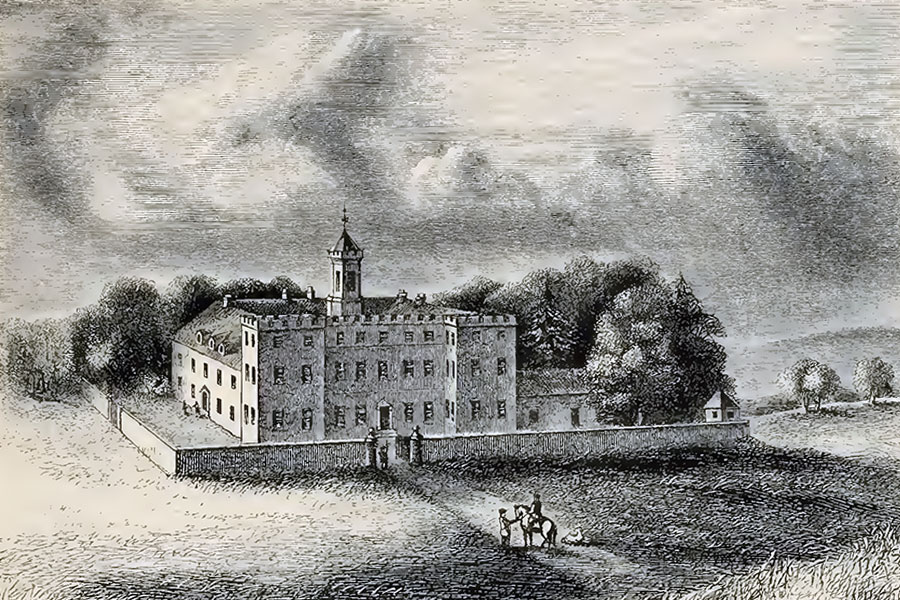
Edinburgh, 1875
On Wednesday the 13th of October a force of some 200 Stratherrick Frasers, led by Fraser of Foyers and Fraser of Byerfield, launched an attack on the castle around 3 o’clock in the morning. Sometimes described as a siege, the Frasers were in fact forced to retreat under cannon and small arms fire from the garrison on the ramparts, losing one Fraser killed and one wounded and left behind. Forbes wrote the following week that the Frasers “carried off my sheep, robbed my gardener, and the poor weaver, who is a common benefit to the country, and carried off some of my tenants’ cattle”.
In January 1746 the Jacobites laid siege to Stirling Castle but when the Duke of Cumberland’s army marched north to engage them the Jacobites retreated to Inverness, prompting Forbes and Loudoun to relocate to the Isle of Skye in February. The castle was seemingly left undefended as in late February Murray issued a command at Inverness on behalf of Bonnie Prince Charlie “to protect and defend the House of Colloden and furniture from any insults or violence that may be done by any person or persons, except such Orders as are issued by us.”
On the 14th of April Bonnie Prince Charlie arrived at Culloden House and spent two nights there with his principal officers, with many Jacobites camping out in the grounds.
Following the disastrous Battle of Culloden on the 16th of April, on Drummossie Muir to the south-east of the castle, seventeen, eighteen or nineteen Jacobite officers were either imprisoned or hidden in the vaults of the castle, depending on the source. All sources seem to agree that the officers remained there for three days before being transported in two carts to Culloden Wood where they were shot.
Another version of the story states that sixteen Jacobite soldiers were killed at the Brangas Tree, an English elm which stood in front of Culloden House, and were buried nearby.
The money that Forbes had spent on the defence of his property and the wider area for the government was never reimbursed and ruined him financially. He died in December 1747 leaving Culloden and considerable debts to his son and successor, John. In 1749 John married Jean Forbes, daughter of Sir Arthur Forbes of Craigievar and Christian Ross.
The house is marked, with twin bays projecting south-west, within extensive landscaped gardens on Roy’s mid-18th century map.
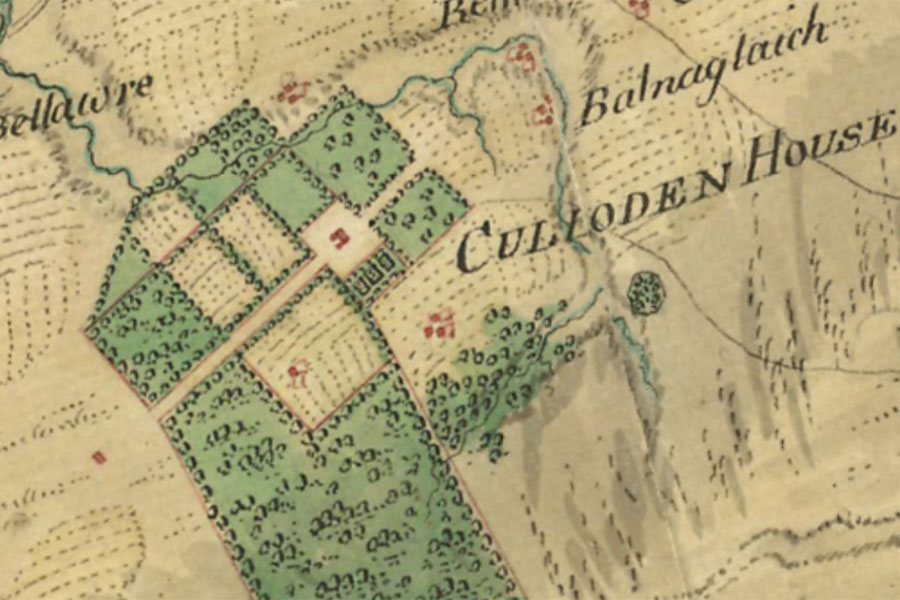
William Roy, 1747-1755map image courtesy of NLS
John had a head for business and developed and expanded the Ferintosh distillery, taking full advantage of the duty exemption, building three new distilleries in the 1760s. By the end of the decade Forbes was producing two thirds of all the legal whisky in Scotland.
Around this time the Adam brothers were working on Fort George. Robert Adam was apparently a guest at Culloden and is said to have offered advice regarding the design of a new house. Work on this new house commenced in 1772, the year John died and was succeeded by his son, Arthur. Several sources refer to the house being demolished and replaced with a new house, however it is perhaps more likely that the existing structure was extensively remodelled and extended. Indeed the old castle’s vaults remain intact in the new house’s basement. Other sources refer to a fire some 20 years previously having left the house semi-derelict.
The house, which is variously described as being completed in 1783 or 1788, was built in the classical style and consists of a main five bay block of two storeys and mansard attic over a raised basement level incorporating the old vaults. The main entrance is flanked by Doric columns surmounted by an open pediment and is set within a slightly advanced central bay featuring a pediment containing a coat of arms.
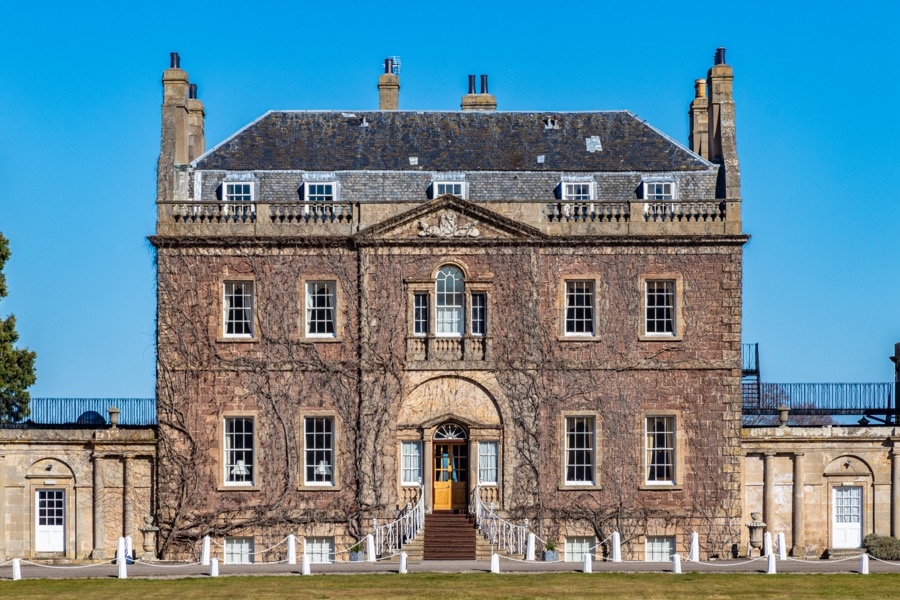
Because of the raised basement the ground floor of the house is slightly elevated from ground level and is accessed via a stone staircase.
The interiors of the new house feature the classic Georgian proportions and grandeur familiar to the Adam style.

To the west and east of the main block are a pair of matching lower two storey pavilions, each linked to the main block by a single storey quadrant.
Contemporary with the house are a walled garden, gardener’s bothy, a pair of gate piers at the entrance to the driveway to the south-west, and a stable block and doocot to the south of the house.
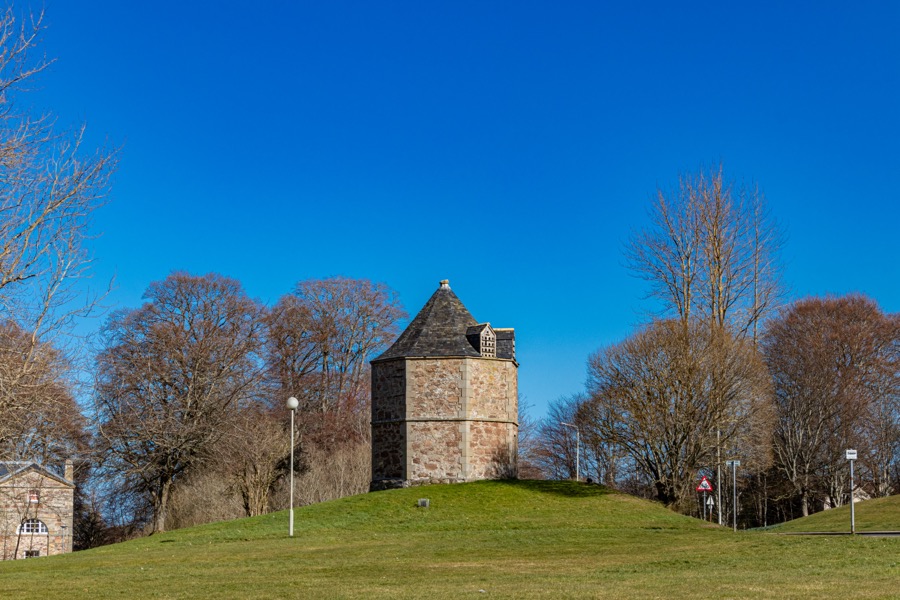
Arthur died in 1803 and was succeeded by his eldest son, Duncan, who died in 1840 and was succeeded by his eldest son, also named Arthur. Upon this Arthur’s death in 1879 Culloden passed to his brother, Duncan, his son having predeceased him, at which time the estate comprised of some 5655 acres.
Duncan was responsible for documenting the landscape of the Battle of Culloden and erected several of the memorials that can still be seen today including The Great Cairn, The Well of the Dead and grave markers for the various clans.
When Duncan died without issue in 1897 the house and 78 acres of parkland were sold to pay death duties, raising a sum of £750,000. The Forbes of Culloden and Ferintosh line continued with his nephew, Duncan George Forbes, eldest son of his younger brother the late Joseph William Forbes, who seems to have inherited the remainder of the estate. By 1899 Culloden House was home to a Mrs Isabella Thomson Sinclair although I’ve been unable to find out anything about her or her connection to Culloden other than that she was the widow of William Sinclair Thomson Sinclair of Freswick who had died in April 1894 and the eldest daughter of James Henderson of Bibster.
Duncan died unmarried in 1903 and was succeeded by his younger brother, Joseph Harding Forbes, who had emigrated to Australia where he became the manager of the Bank of North Queensland in Childers. Meanwhile Mrs Thomson Sinclair remained resident at Culloden House until at least 1907. Joseph Forbes died in 1908 and was succeeded in the Culloden estates by his son, Hector. In 1915 Charlotte Stirling moved to Culloden House following the death of her husband, William Stirling of Fairburn and Monar, in November 1914. She was the second daughter of Aeneas Mackintosh of Daviot and Louisa Fanny Sybella Macleod who owned property in the area including parts of Drummossie Moor that weren’t owned by the Forbes family.
Charlotte Stirling died in December 1935 but who took up residence at Culloden House I have been unable to ascertain. In 1944 Hector Forbes gifted the clan graves, The Great Cairn and Kings Stables Cottage to the National Trust for Scotland, as well as selling to them the field containing the Cumberland Stone. During the mid-20th century the estate was broken up further by the construction of residential properties and roads within its former boundaries.
Culloden House remained in private ownership until 1975 when it was converted into a country house hotel and it is still run as a hotel today.
Alternative names for Culloden House
Calloden; Castle of Culloden; Castle of Cullodin; Colladine; Colloden; Colloden House; Collodene; Collodin; Collodine; Collodne; Coloden; Coulloddinn Castle; Coullodin; Cowdein; Cowlodin; Cullodden; Culloddin; Culloddine; Culloddone; Culloden Castle; Culodin; Cullodin; Cullodine; Cullodinis; Cullodyn; Cullodyne; Cullodynne; House of Culloden; Old Culloden House










